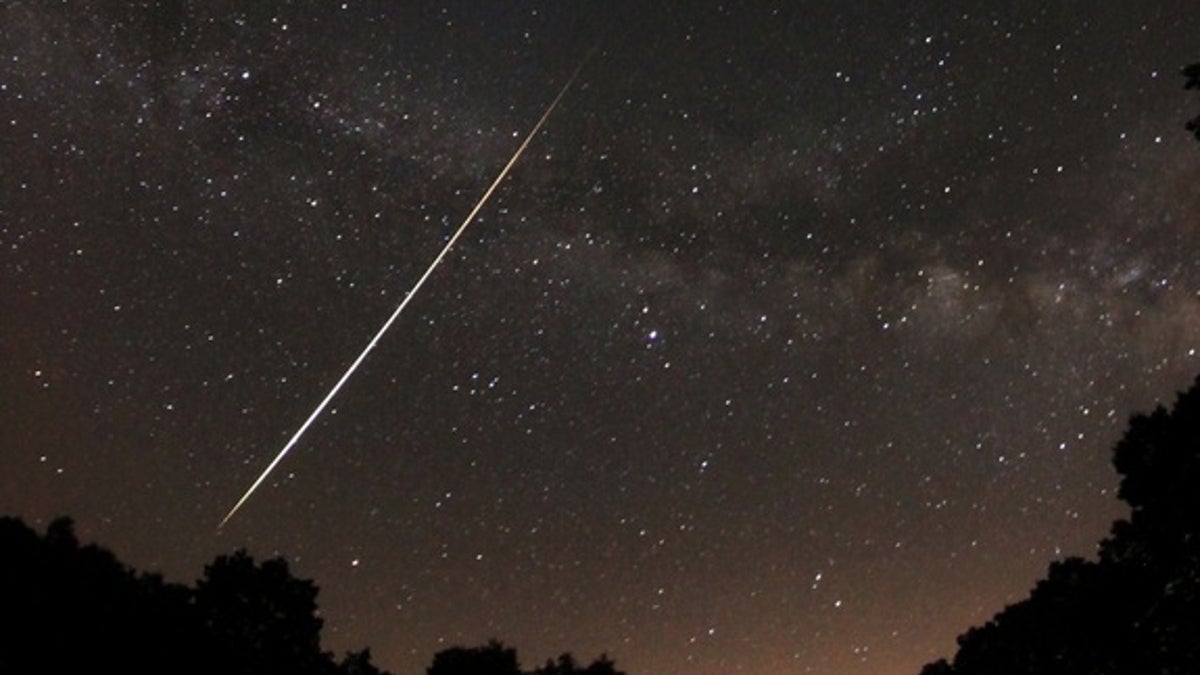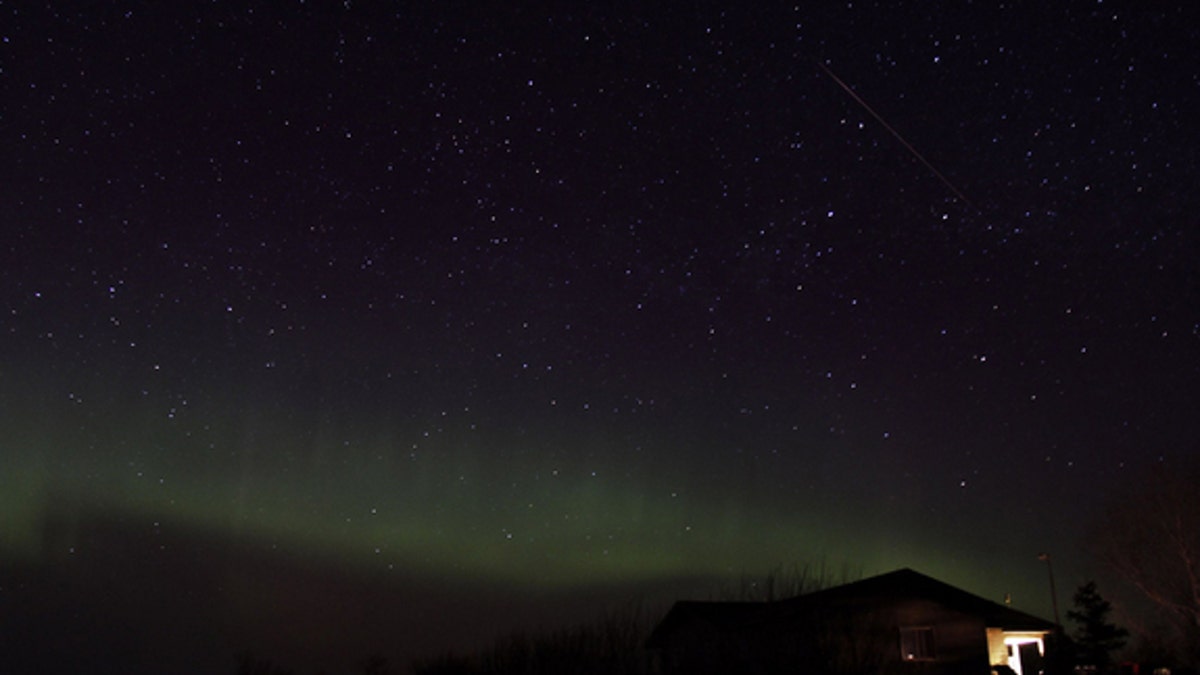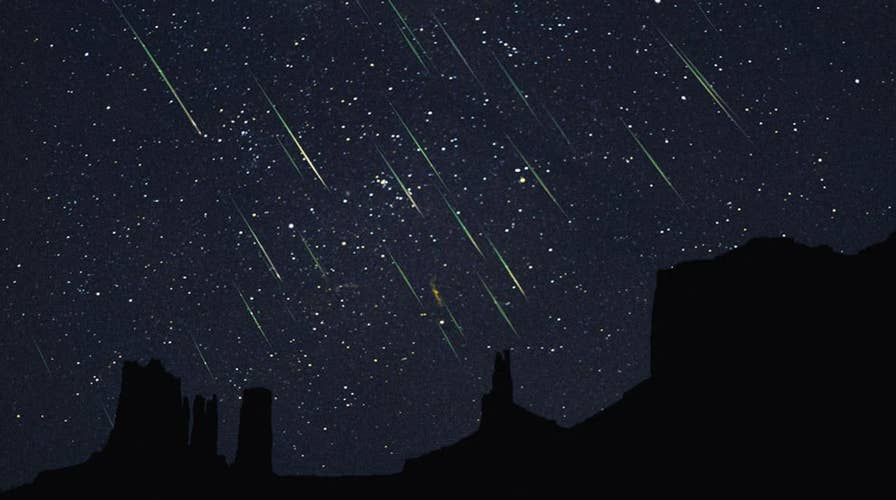Lyrid meteor shower: What to know
In late April, skywatchers in the northern hemisphere will get a view of 2018's Lyrid meteor shower. Here is everything you need to know about this year’s starry spectacle.
Stargazers are going to appreciate these April showers.
Night skies in the Northern Hemisphere are going to sparkle with meteors early Tuesday as the annual Lyrid meteor shower puts on a spectacular display — with 10 to 20 meteors per hour at its peak.
"The number of meteors can vary, and very rarely 'storm,' but on a very dark and moonless night there are usually up to 20 good meteors an hour," according to NASA's Jet Propulsion Laboratory
The Lyrid meteor shower has reportedly been around for 2,700 years, making it one of the oldest meteor showers on record. It hit Earth around April 16 and is expected to last through April 25.
Here's everything you need to know about the starry spectacle.
How are meteors formed?

Manish Mamtani (A meteor forms when a meteoroid enters Earth's atmosphere.)
A meteor forms when a meteoroid, a type of space rock that breaks off from an asteroid — a rocky body orbiting the sun — enters Earth's atmosphere. As soon as the space debris crosses over, it breaks down into what scientists call a "meteor," which then vaporizes and — as a result of friction — appears as a bright streak of light in the sky.
"Because of their appearance, these streaks of light some people call meteors 'shooting stars,'" NASA explains in a blog post online. "But scientists know that meteors are not stars at all — they are just bits of rock!"
What is a Lyrid meteor, specifically?

Lyrid meteors are small chunks of rock that broke off of Comet Thatcher. (Brian Emfinger)
Lyrid meteors are small chunks of rock that break off of Comet Thatcher, "a long-period comet that orbits the sun about once every 415 years," Space.com reports.
The Earth crosses Comet Thatcher's path every year around April, causing a "shower" of meteors to fall from the sky as it collides "with a trail of comet crumbs," the space site explains.
"If you see a meteor … notice whether it leaves a persistent train – that is, an ionized gas trail that glows for a few seconds after the meteor has passed. About a quarter of Lyrid meteors do leave persistent trains," EarthSky suggests.
What's a meteor "outburst"?
Occasionally a meteor shower develops into a storm, dropping up to 1,000 meteors per hour. This occurrence is rare, though, and often difficult to predict.
"People say there is some periodicity there, but the data doesn't support that," NASA meteor expert Bill Cooke told Space.com, adding that these so-called "outbursts" are usually at least 30 years apart.
When can I see the Lyrid meteor shower?

Bill Allen (Catch the Lyrid meteor shower at its peak on April 22.)
You can spot meteors in the sky until April 25, though the shower peaks just before dawn — from 12 a.m. to 5 a.m. — on April 23, according to EarthSky.
How can I watch it?
Unlike solar eclipses, which requires special equipment to view the astrological event, you don't need anything to spot this celestial event.
"Get to a dark spot, get comfortable, bring extra blankets to stay warm, and let your eyes adjust to the dark sky," NASA suggests. "A cozy lounge chair makes for a great seat, as does simply lying on your back on a blanket, eyes scanning the whole sky."
The meteors will start to form around the brightest star in the constellation Lyra, which is shaped like a harp. However, NASA recommends focusing on a spot in the sky away from the constellation, as they will "appear longer and more spectacular from this perspective."

